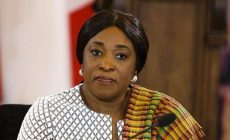Govt borrows GH¢781m in 2 months
- Posted on
- Comment
 GOVERNMENT borrowed GH¢781.918 million from the domestic marketbetween December 2015 and January 2016.
GOVERNMENT borrowed GH¢781.918 million from the domestic marketbetween December 2015 and January 2016.
The debt instrument which are listed on the Ghana Stock Exchange are made up of four 1-year fixed rate note, two 2-year fixed rate note and a 3-year fixed ratenote.
The largest debt instrument issued was a GH¢373.2 million 3-year fixed rate note which was issued on January 11, 2016 at an interest rate of 24.75 percent.
Following closely was a GH¢255.8 million 2-year fixed rate note issued on December 14, 2015.
The yield for that instrument was 23.30 percent.
According to a circular from the Ghana Stock Exchange, the interest payment will be done within half a year from the date of issue.
For the 1-year note, the issue dates were December 7 and 21, 2015 and January 4 and 18, 2016, respectively.
On the other hand, the 2-year notes were issued on December 14, 2015 and January 11, 2016, respectively.
According to the Bank of Ghana, non-resident foreigners were allowed to participate in the securities with tenure of two years and above.
Already, government is expected to raise a total of GH¢6.03 billion through the Bank of Ghana in securities alone this month.
This will include GH¢3 billion in 91-day Treasury bill, GH¢2.1 billion in 182-day Treasury bill and GH¢120 million worth of 1-year note. The rest are GH¢300 million 2-year note and GH¢500million from a 5-year fixed rate note.
According to Bank of Ghana, the aggregate borrowing for the month of February 2016 will cover maturities of GH¢5.55 billion. Net issuance during the month is therefore GH¢476.06 million.
The central bank stated that the auction for the 91-day and 182-day Treasury bills, the 1-year and 2-year notes will be conducted on Fridays.
The treasury notes and bonds may however be re-opened to create liquidity in the instruments.
According to the latest summary of Financial and Economic Data, Ghana’s public debt stock hit GH¢92.2 billion in September 2015, representing 69.1 percent of GDP.
Domestic debt at the end of December 2015 was however GH¢38.8 billion, approximately 29.1 percent of GDP.
By Augustine Amoah










 (Selorm) |
(Selorm) |  (Nana Kwesi)
(Nana Kwesi)